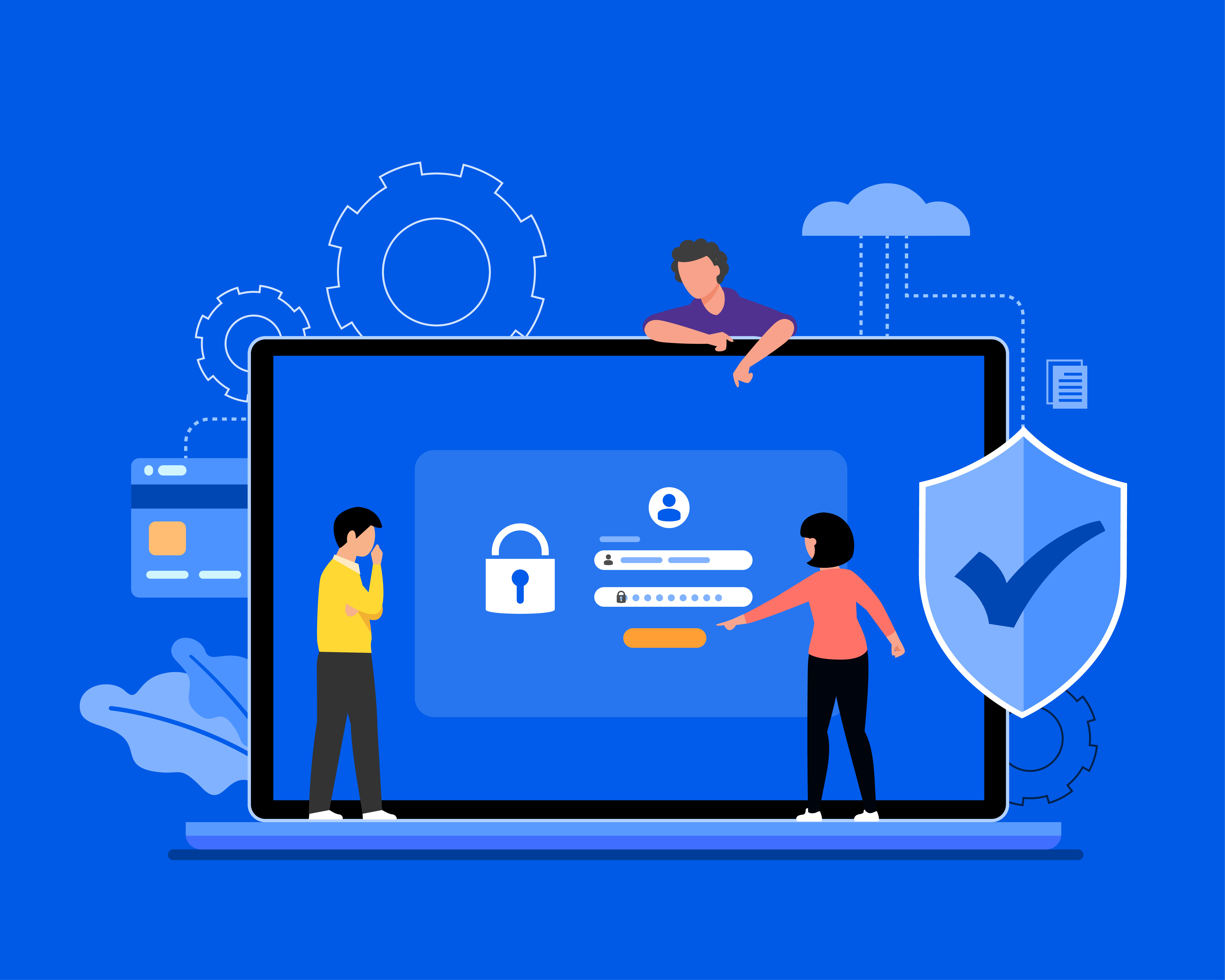Cyber threats are evolving, and businesses of all sizes—especially SMBs—are prime targets for phishing attacks. Multi-factor authentication (MFA) has been widely adopted to enhance security, but not all MFA methods are truly secure against phishing. Enter phishing-resistant MFA—a stronger, more reliable way to protect your accounts from credential theft.
In this guide, we'll break down what phishing-resistant MFA is, why it matters, and how your business can implement it effectively.
What is Phishing-Resistant MFA?
Phishing-resistant MFA (Multi-Factor Authentication) is an advanced authentication method designed to prevent attackers from stealing credentials, even if they trick users into revealing them. Unlike traditional MFA methods—such as SMS codes or app-based authenticators—phishing-resistant MFA ensures that only the legitimate user can log in, even if attackers attempt man-in-the-middle (MITM) attacks, credential harvesting, or social engineering tactics.
What Makes MFA "Phishing-Resistant"?
To be considered phishing-resistant, an MFA solution must:
- Prevent Credential Forwarding – Attackers can't steal authentication codes and use them elsewhere.
- Use Strong Cryptographic Authentication – Secure authentication methods that validate both the user and the website.
- Eliminate User-Entered Codes – No one-time passcodes (OTP) that can be intercepted.
Phishing-resistant MFA solutions rely on public key cryptography, which ensures that authentication cannot be replayed or redirected.
How is Phishing-Resistant MFA Different from Standard MFA?
| Feature | Standard MFA (Vulnerable) | Phishing-Resistant MFA (Secure) |
|---|---|---|
| Authentication Method | SMS, email codes, authenticator apps | FIDO2 security keys, Passkeys, PIV cards |
| Susceptible to Phishing? | Yes—codes can be intercepted | No—relies on cryptographic authentication |
| Requires User Input? | Often—users enter codes manually | No—automated authentication handshake |
| Man-in-the-Middle (MITM) Protection | No—attackers can steal session tokens |
Yes—authentication is bound to specific websites |
Why Your Business Needs Phishing-Resistant MFA
Protects Against Sophisticated Phishing Attacks
Cybercriminals use tactics like Adversary-in-the-Middle (AiTM) attacks, where they intercept login credentials in real time. With phishing-resistant MFA, authentication requests are tied to the legitimate website and can't be reused by attackers.
Meets Compliance Requirements
Many industries, including finance and healthcare, require phishing-resistant authentication under regulations like NIST 800-63B and CISA guidelines.
Stronger Security Without User Frustration
Unlike traditional MFA, phishing-resistant methods eliminate the need to type in codes, reducing human errors and frustration.
Reduces the Risk of Costly Breaches
A data breach caused by phishing can cost SMBs thousands (or even millions) in damages. Implementing phishing-resistant MFA can prevent account takeovers, reducing financial and reputational risks.
📌 Related Read: Top SMB Cybersecurity Risks and How to Protect Your Business
What Are the Best Phishing-Resistant MFA Methods?
FIDO2 Security Keys (Most Secure)
- Physical security keys (e.g., YubiKey, Google Titan Key)
- Requires the user to physically tap the key to authenticate
- Cannot be intercepted or replayed
Passkeys (Passwordless & Secure)
- Built-in to devices (e.g., Apple Face ID, Windows Hello)
- Uses cryptographic authentication without entering a password
- Bound to the user’s device—eliminates credential phishing
PIV (Personal Identity Verification) Cards
- Often used by government agencies and enterprises
- Requires physical card and PIN for authentication
How to Implement Phishing-Resistant MFA in Your Business
Step 1: Identify High-Risk Accounts
Start with admin accounts, email accounts, and financial systems, as these are the primary targets of phishing attacks.
Step 2: Choose a Phishing-Resistant MFA Method
- For most SMBs, Passkeys or FIDO2 Security Keys offer the best balance of security and usability.
- Avoid SMS-based MFA, as SIM swapping attacks can compromise security.
Step 3: Train Employees on Secure Authentication
- Educate your team on the dangers of phishing attacks and why traditional MFA is not enough.
- Implement a security awareness program to reduce human errors.
📌 Related Read: CEO Phishing Explained: How to Protect Your Business
Step 4: Enforce MFA Across All Business Applications
- Ensure phishing-resistant MFA is mandatory for cloud services like Microsoft 365, Google Workspace, and VPNs.
- Use conditional access policies to enforce MFA for remote logins.
📌 Related Read: Why Your Business Needs a Password Manager
Step 5: Monitor and Audit Authentication Logs
- Regularly review sign-in logs for unusual activity.
- Use Security Information and Event Management (SIEM) tools to detect phishing attempts.
FAQs About Phishing-Resistant MFA
Is Google Authenticator or Microsoft Authenticator Phishing-Resistant?
No. While authenticator apps are more secure than SMS, they can still be compromised by phishing attacks. Only FIDO2 security keys, passkeys, and PIV cards are truly phishing-resistant.
Can I Use Phishing-Resistant MFA for Microsoft 365?
Yes. Microsoft supports FIDO2 security keys and passwordless authentication for Microsoft 365 accounts.
📌 Related Read: Microsoft Teams Premium: Is It Worth It?
Does Phishing-Resistant MFA Work with VPNs?
Yes. Many enterprise VPNs support hardware security keys and certificate-based authentication, making them resistant to phishing.
Strengthen Your Business Security Today
Phishing-resistant MFA is a critical security upgrade that every business should implement. As phishing attacks become more advanced, traditional MFA is no longer enough. By using FIDO2 security keys, passkeys, or PIV cards, your business can eliminate credential theft risks and stay ahead of cyber threats.
Need help implementing phishing-resistant MFA? Our cybersecurity experts can help you deploy the right authentication solution for your business. Contact us today!
📌 Related Read: What Cybersecurity Best Practices Should Small Businesses Follow?

